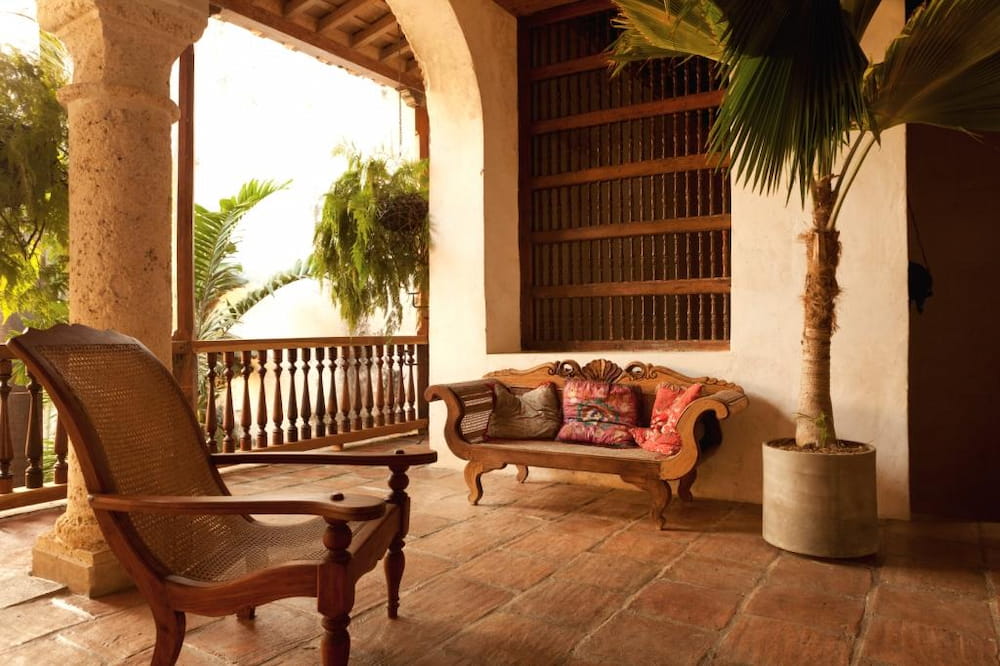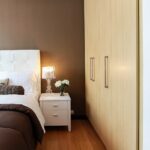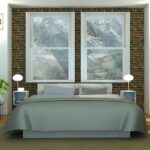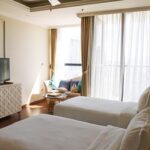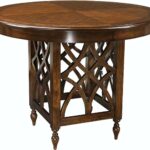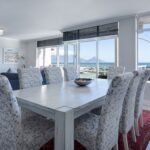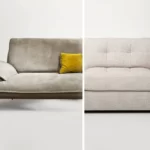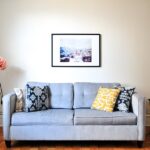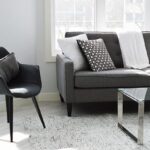If a visitor enters a house straight through the door and into the living room or front parlor, the change from the outside to the inside can be very startling.
An architectural design element called a foyer often helps visitors orient themselves before moving into a specific room of the home. The area that serves as the reception area for visitors is typically a brief hallway or open area just inside the front door. The area might be connected to other ground-floor rooms and a staircase leading to an upper floor.
A foyer also serves as the first point of contact with the interior design theme of the house. The room may also be furnished with a decorative table, coat rack, an enormous room clock, or a framed mirror in addition to framed paintings or other fine art pieces on the walls and other fine art pieces or framed paintings on the walls. A striking overhead light fixture or a number of floor lamps may be used to illuminate the entrance.
Please read on.
Table of Contents
Foyer Basics
A foyer is an area at the front of the home, entered after passing through the front door. The foyer links the front door to the interior rooms of a house. Some foyers have the feel of a room, while other entry areas resemble hallways (in some cases, these may be called “entryways” rather than “foyers”).
The term “foyer” is often used interchangeably with “entry” or “entryway“. Some front rooms are tiny, with nothing more than a straightforward console table. Others are quite large, spanning two levels and featuring a view of the stairway. You are likely to hear the term “foyer” used when describing an entry with the feel of a room.
A foyer may include a closet for coats, umbrellas and other essentials. Also note that some homes have a mudroom, which can be separate from the foyer and include a place to remove and store coats, dirty shoes and other items before entering the main part of the house. In other homes, the mudroom and the foyer may be combined, as an organized stashing area beautifully keeps coats and supplies in check:
Because the foyer is the first interior space of the home that you see, flooring is rarely carpet. In fact, tile is a popular choice, as it can easily be cleaned if residents and guests track in outside dirt and leaves:
Create A Foyer In An Open Living Room
A foyer will be simpler to create in your home than in most others if your open living room is on the same floor as the front door. Here are a few tips to get you started:
Define The Space With A Rug Or Runner
The area rug is well known for its ability to define spaces. For small spaces with no entry, placing a rug in front of a front door will open up an “entryway” you never knew was there!
Set The Purpose
The functions of a home’s components make them simple to recognize. A room with sofas is obviously a sitting room or living room; a room with bar stools or a kitchen island is obviously the kitchen; and a room with a desk and filing cabinet is obviously an office. Make it clear that a foyer’s purpose is to transition you from the outside in by including wall hooks for hanging coats, a bench for taking off shoes, and a console table for putting keys and purses.
Make It Pretty
A traditional foyer is as elegant as its name suggests. To give the room a little more formality, add some opulent decor like wall art and mirrors.
Ways To Style Your Foyer
We will discuss a variety of design aesthetics in this section, ranging from ostentatious to practical. Let’s start with a functional yet elegantly designed foyer without further ado.
Practical And Aesthetic Foyer Designs
It is always a good idea to design an entryway with a strong emphasis on practicality if you live in an area subject to severe weather. Practicality need not be monotonous by any means. Look at the illustration below for an illustration. Not only is there enough room for your muddy boots and coats to be stored, but it also manages to keep a tidy and lovely appearance.
A slightly modified version of the first image can be seen in the entryway that is visible further on. We feel that the padded seating area in this location adds a little more warmth. In terms of practicality, there is plenty of room to hang your coats and store your shoes. In addition, we adore the blue and white color scheme in this foyer.
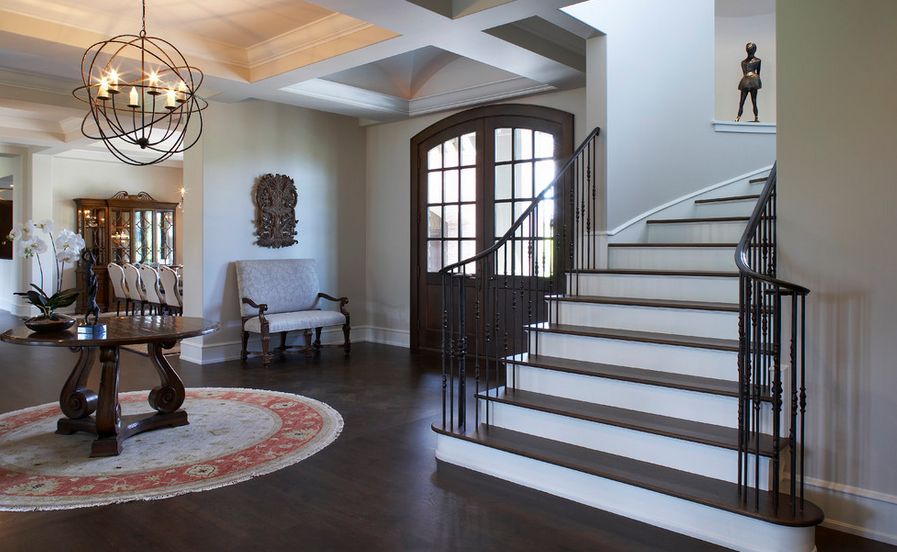
Minimalistic Foyers
Utilizing a dominant element, such as the stunning console table we can see below, is a good way to maintain the minimalist appearance. The dark-colored console table complements the dark-brown wall behind it well with its dark wooden tone. A stylish contrast is also produced between the dark components and the white doors and accents.
The first foyer’s guiding principle is continued in the foyer you will find below. The bold circular console table leaves a lasting impression. Additionally, we adore how this example makes use of ceiling lights.
Here, sculptures and flowers are used in a tasteful way to make an impression that will last. Observe how the majority of the inanimate objects’ colors are taupe, yet the addition of flowers and tasteful lighting give the foyer a lively, welcoming appearance.
As shown in the example below, you can also use a sizable rug to accentuate your foyer. The rug’s color and herringbone design go well with the other elements in this image, resulting in a harmonious composition.
The foyer shown in the flawless photo below makes tasteful use of the color white and makes a statement with a commanding centerpiece. This is a wonderful illustration of how to use flowers to adorn your entryway.
Extravagant Foyers
This section is for you if you’re the kind of person who is determined to leave a lasting impression. The checkered floor is undoubtedly the key feature in the entryway below. The use of black and white always produces a striking contrast, and it is done in this instance with taste. We also adore the use of the vintage chandelier in this foyer.
It’s accurate to say that this entryway is opulent, ostentatious, grandiose, and lavish. The guests will undoubtedly be visibly stunned by this outstanding foyer, whether they exit a Rolls Royce or a Bentley. We adore this foyer’s symmetrical layout, particularly the mirrored seating arrangements.
Old -school Charm
In addition to being useful, placing a mirror in your foyer can also save you a ton of time when picking out a background. In addition, we adore how this example makes use of small ottomans.
Look at the examples below if you want your rug to have a strong presence. This large rug’s colors are tastefully used throughout the entire foyer, which contributes to the room’s cohesive appearance.
In the example above, the antique sofa and the sizable black-and-white portrait create a lovely rustic charm. In addition, the dark, uneven flooring, which in any other setting might be seen as tacky, seems tailor-made for this entrance.
Let’s finish with some final advice before we part ways. The examples in this article are here to inspire you to design your foyer in a unique way. Always keep in mind that your house is a reflection of your distinct tastes, so design it so that it speaks clearly of you and you alone.
Final Words
Even though it might have a different purpose than the space in a house, the communal area outside of an auditorium or theater is also referred to as a foyer. Concession stands, front desks, ticket booths, and public restrooms are frequently found in theaters. The reception area, elevators, and stairwells may all be accessible from the public lobby in a professional building.
Numerous home improvement books and websites offer advice on how to add more visual interest or enhance the lighting design of this frequently disregarded space for those looking to improve the appearance or functionality of a home foyer.

